Originally published by IslamicWorldNews
Loitering munitions, commonly referred to as suicide drones or kamikaze drones, are unmanned weapon systems engineered for rapid response and the swift destruction of enemy targets. These weapons combine features of cruise missiles and combat drones, offering a low-cost, efficient, and reliable solution on the battlefield. The Ra’ad drone family, produced by the Iranian Ministry of Defense Aerospace Industries, is currently in service with the IRGC Ground Forces. This family includes three variants: Ra’ad-1, Ra’ad-2, and Ra’ad-3, each designed to perform assigned missions at different ranges.
An overview of the Raad drone family
The Raad family of drones is among the first Iranian unmanned munitions specifically designed for infantry use. These drones feature a standard aerodynamic design similar to other models like the Russian Lancet and the Israeli Hero. With a cylindrical body, two rows of wings, and electric propulsion, along with an electro-optical system integrated into the nose, the Raad drones have a familiar appearance.
After modeling itself on Switchblade drones and developing an indigenous version called Meraj 521, the IRGC Ground Force has now also begun to explore the use of other prominent global models.
Raad-1 drone:
Currently, there are no available details regarding this drone, leaving its specifications and capabilities shrouded in mystery.
Raad-2 drone:
The Raad-2 suicide drone features a wingspan of 1.8 meters and a fuselage length of 1.5 meters. It is capable of flying for up to 17 minutes using an electric motor. With a declared operational range of 20 kilometers, the drone can achieve speeds estimated between 60 and 70 kilometers per hour. Additionally, the Raad-2 carries a 5-kilogram warhead, which can be fitted with various types of fragmentation or explosive warheads.
It’s worth mentioning that prior to its official unveiling during the second phase of the Great Prophet-19 exercise in 2025, the Ra’ad-2 suicide drone was informally referred to as the Rezvan drone.
Raad-3 drone:
The Raad-3 drone has a mission similar to that of the Raad-2, but with some enhancements. It features an increased wingspan of approximately 1.85 meters and a slightly larger fuselage measuring about 2 meters in length. These larger dimensions, along with a more powerful engine, likely enable the drone to carry a greater energy storage capacity. As a result, its flight duration has been extended to 40 minutes, and it can now support a warhead weighing up to 12 kilograms.
Despite the fact that the Raad family of drones, which have been produced in three versions so far, all use electric propulsion, their launching method is different.
The Raad-2 UAV features a compact design with retractable wings, enabling efficient storage and launch from a cylindrical chamber. Its wings, each attached by a spring joint, are compressed towards the nose when in the chamber. Upon launch, a rocket booster propels the UAV out of the chamber, and the wings deploy by rotating 90 degrees. This innovative design allows the UAV to be stored and launched from a confined space using a hot gas blast.
On the other hand, the box-launching capability of the Raad-2 UAV has enabled the development of multi-launchers for this drone. A specialized multi-purpose launcher has been created for both the Raad-2 and Ghaem-118 UAVs, allowing for the deployment of up to 8 box launchers on Toyota tactical vehicles as well as on the Aras family of vehicles.
Unlike the Raad-2, the Raad-3 features fixed wings and is launched from a rail with the assistance of a rocket booster. The use of rail launchers to provide initial acceleration for drones is common, utilizing hydraulic, pneumatic, or JATO (Jet-Assisted Take-Off) systems. This approach is seen, for example, in different variants of the Russian Lancet-E and other similar drones.
The Raad family of drones is equipped with an electro-optical system located in the nose, likely a simple and cost-effective type of television camera. This capability allows the drone to transmit images to the operator via radio communication with low latency. Consequently, the operator can use these images to identify the environment or make decisions about targeting specific objectives.
It is expected that Raad drones, similar to their foreign counterparts, will eventually be capable of being outfitted with more advanced and multifunctional electro-optical systems, such as thermal or semi-visible cameras for nighttime operations. However, there is currently no official information confirming this.
Regardless, it is evident that the development of loitering ammunition for infantry and special forces is crucial on modern battlefields.
In modern warfare, mobility has become a fundamental principle in the design of ground combat systems. Enhancing the survivability of weapons on the battlefield—especially against enemy counterfire and other threats—demands agility and rapid movement. In this context, mobile multiple rocket launcher systems (MLRS) and self-propelled guns equipped with automatic loading systems are effective weapons. They enable precise and rapid attacks while allowing for immediate repositioning after each operation. This strategy not only boosts firepower but also decreases the likelihood of detection and destruction by the enemy, which is crucial in dynamic, rapid-response combat scenarios. Thus, the significance of the Ra’ad family of drones can be understood within this framework.
It is important to note that, in addition to the Raad family of drones, the IRGC Ground Forces also utilize another similar type of drone known as the Saeqeh family. According to available information, this family was produced as a more cost-effective option and comes in three versions.
The Saeqeh-1 drone has a flight endurance of 30 minutes and an operational range of 20 kilometers, with the capacity to carry a 1-kilogram warhead. At least in the Saeqeh-1 version, this family of drones is equipped with only a small fixed forward-looking camera located in the nose.
The concurrent development of these two families of drones raises questions about their roles within the IRGC Ground Forces combat organization. One key question is whether these drones can operate in a network-based manner. This would allow an operator to simultaneously control multiple drones, utilizing one Raad family drone for reconnaissance while deploying several Saeqeh drones for attack missions.
Today, loitering munitions have evolved beyond their traditional roles, becoming essential in both offensive and defensive missions, including the suppression of enemy air defenses (SEAD). Recent conflicts in the Middle East and Ukraine have underscored the need for tactical advancements that meet infantry requirements, and this has become a pivotal focus for enhancing combat effectiveness. The Iranian armed forces have keenly recognized this trend, dedicating significant attention to developing new technologies and operational capabilities. Notably, this includes innovations such as the Ra’ad and Sa’eqeh suicide drones from the IRGC Ground Force, showcasing a commitment to advancing military strategies. It’s exciting to see how these developments can shape future operations and strengthen Iraninan defense systems!
The history and evolution of loitering ammunition:
The concept of “loitering” was first introduced in the military field in the early 1980s. It emerged in response to the widespread development of mobile air defense systems in the Soviet Union and, subsequently, in Eastern Bloc countries. Systems like the SAM-6 (SA-6 Gainful) challenged the doctrine of Western air superiority because, unlike traditional fixed defense systems, they were not permanently stationed in one location. Instead, these mobile systems were activated only when a threat arose and then concealed again after completing their mission.
At that time, advanced reconnaissance technologies such as modern drones and imaging satellites with today’s capabilities did not exist. Existing spy planes were limited to the technology available during that era. Consequently, detecting mobile defense systems became one of the most challenging military problems.
For this reason, the United States, as one of the two main poles of the Cold War, along with the Zionist regime, which was involved in severe conflicts with Arab countries at that time, sought to develop weapons that could remain in the operational area for an extended period after launch. These weapons were designed to eliminate targets as soon as they were identified, unlike conventional air-launched or cruise missiles.
The roots of this strategy can be traced back to the painful experiences of Israeli forces during the Yom Kippur War, where they faced the Soviet-made defense systems of Syria and Egypt. However, new tactics were quickly implemented during Operation Mole Cricket 19 in 1982, aimed at suppressing Syrian air defenses. In this operation, a significant number of unmanned aerial vehicles were used as bait to provoke ground-based defense systems, creating opportunities for the use of anti-radar weapons.
The successful results of this operation encouraged further investment in drones and loitering munitions throughout the 1980s.
The Harpy drone, which is based on the South African ARD-10 Lark, along with the American Tacit Rainbow anti-radar missile, were some of the earliest weapons to have this capability in the 1980s. These weapons could essentially “scroll” through the sky to identify and destroy targets at the appropriate moment. However, due to the absence of advanced optical sensors, complex image processing algorithms, and limited radio and satellite communications, these weapons relied heavily on anti-radiation seekers.
As the 2000s progressed, the limitations of loitering munitions diminished, allowing their role to expand beyond suppressing enemy air defenses (SEAD). The integration of electro-optical systems with advanced image processing and sensors shaped the modern concept of these drones. A notable example is the transformation of the Harpy drone into the Harop. While militaries worldwide began to adopt drones during this period, the focus largely remained on cruise missiles and air-launched weapons. However, this perspective shifted significantly over the following two decades.
The evolution of loitering munitions advanced with the creation of special forces and infantry versions, emphasizing drone miniaturization to reduce mass and occupied space. This allowed for faster transport and deployment by infantry. Traditional aerodynamic designs like delta wings proved less effective, prompting the exploration of unconventional alternatives. During the 2000s, the United States experimented with small-sized battlefield drones through projects like GLUAV, CCLR, and SBIR, which largely met with limited success. However, these efforts culminated in the development of the Switchblade Block-0 drone in 2004.
Besides the Switchblade, the Hero series of drones, developed by Israel’s UVision Industries, was among the earliest operational models in this category. Established in 2011, UVision introduced the innovative X-wing design, which has since become a widely adopted standard across various drone manufacturers.




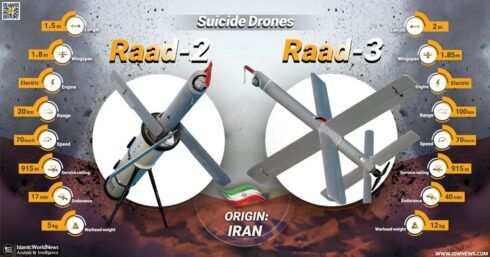
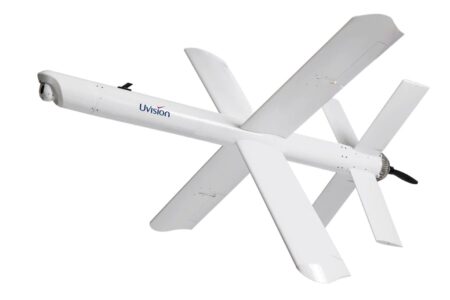
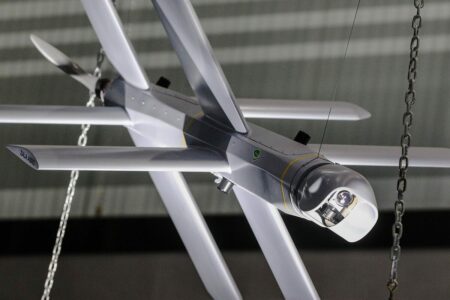
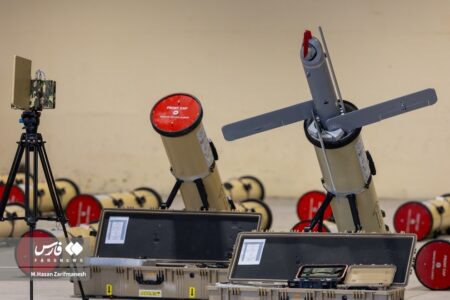
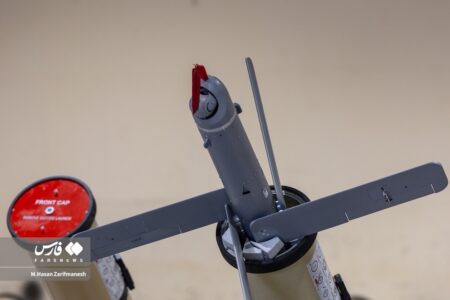
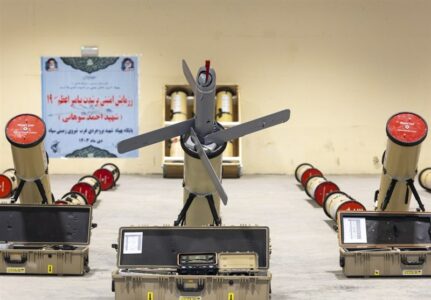
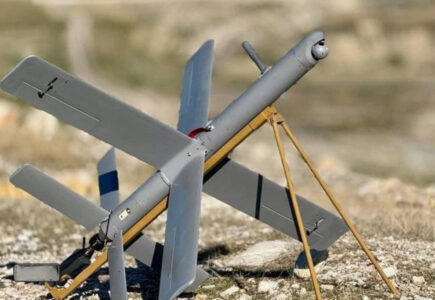
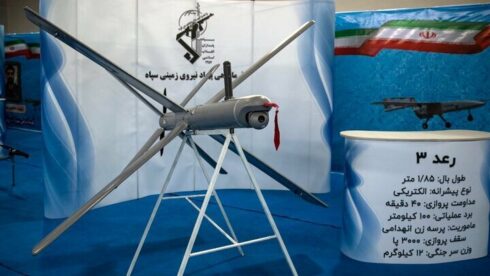
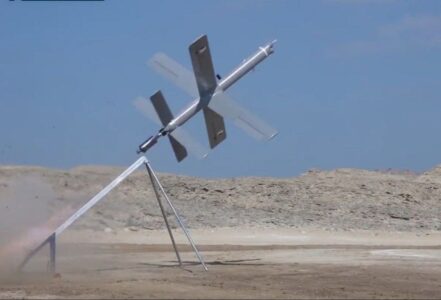

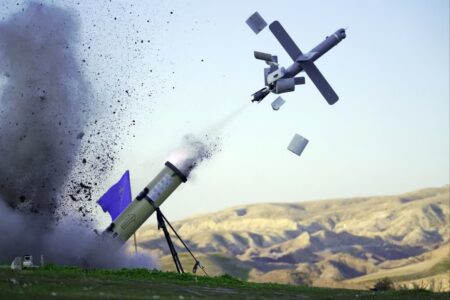
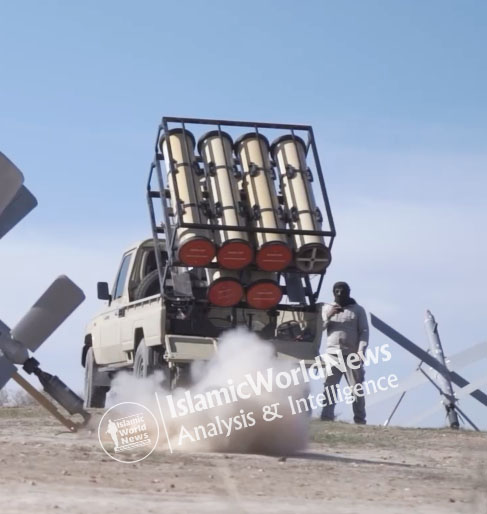

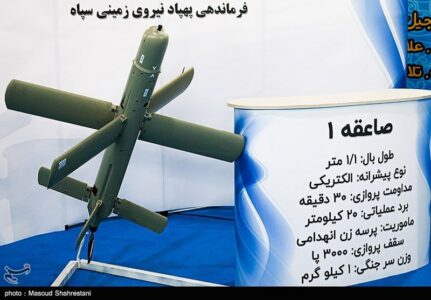
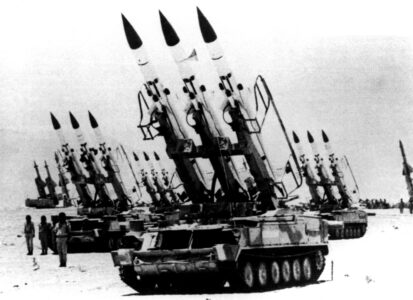
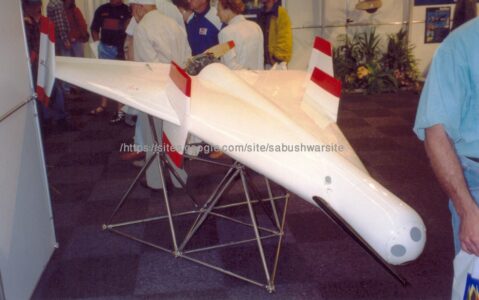
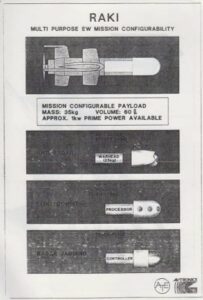

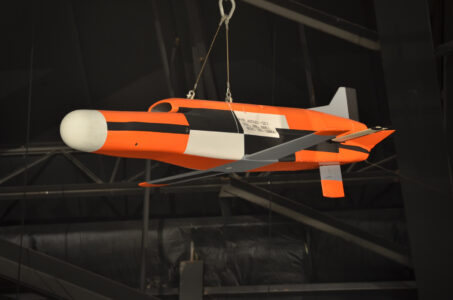
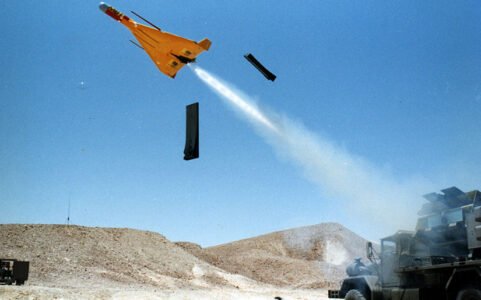
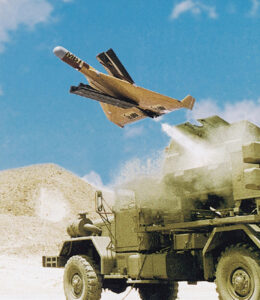
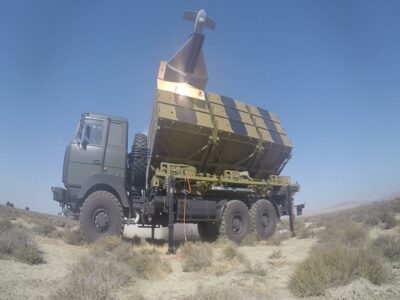
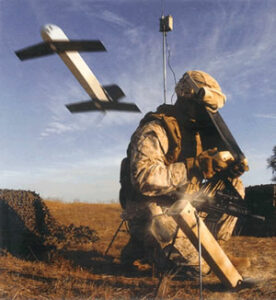
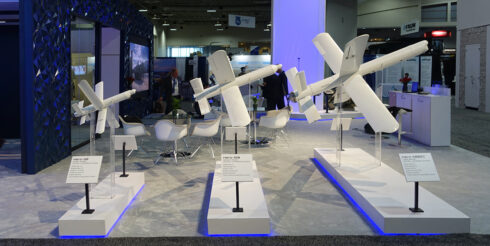
american infantry would likely take heavy losses while fighting for israels control of the mideast in addition to the billions given to bomb gaza civilians and the houthie’s who are acting in protest. it should take more than false nuclear propaganda for americans to make such a sacrifice for the israeli 9/11 killers now with new evidence linking them to the jfk assassination.
not really, the americans don’t impose ridiculous conditions on their military and would use air power even more then the jews do.
if you do not have the soldiers to occupy and police the land you just a terrorist destroyer . conquest takes more than bombs and planes
impressing iran climbing to a drone superpower even due decades of harsh sanctions.
impressing the long range and big warhead of raad3 up to 12 kilogramm what make it a one hit one kill system.
a exemple for the next lancet update with till now only max 3kg warhead, what because of that often only damage but dont totally kill a target.
the iranians are very resilient and willing to resist the shlomo hopefully moscow won’t screw them over too hard due to someones bromance with the big blond guy.
there is a real risk of russia selling out iran or n. korea. it has done so in the past.
woe betide iran if they go to war with the us. woe betide.
that is not iran’s choice. it is the choice of the bought and paid for goy whores like chumpo in the jewsa who will do as they are told by their zio masters. if the jewsa starts yet another war for shlomo, it will be the final nail in its coffin. the eu whores, and the vile zio regime itself. the jewsa will be destroyed just as surely as the british empire was destroyed by ww2. the world economy, the $, and chumpo himself, will just be bits of incidental collateral damage.
irán potrebuje jadrovú zbraň a to čím skôr, aby si zabezpečil vlastnú bezpečnosť. ostatné technológie majú už ako tak zvládnuté. asi tak!!! inak nebudú mať pokoj od darebáckeho štátu usa nikdy!!! svetu mier a mysleniu zdar!!!